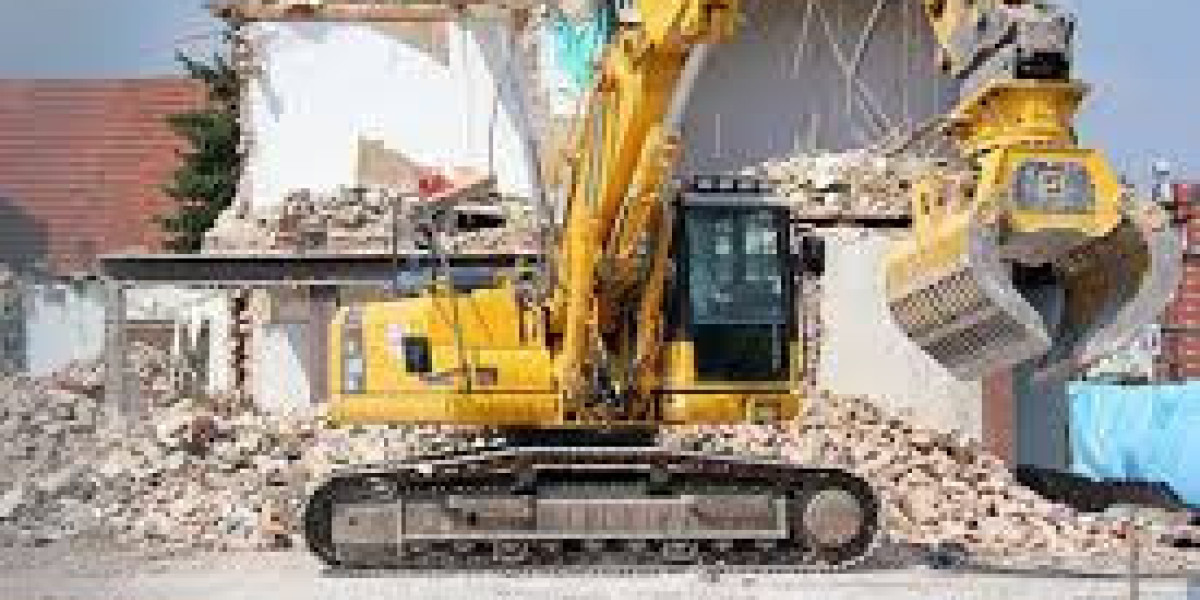Internal demolition is a critical process in the world of construction, renovation, and property redevelopment. Unlike full-scale demolition that involves tearing down an entire structure, internal demolition—also known as soft strip demolition or interior strip-out—focuses on the removal of non-structural elements inside a building. This process plays a vital role in preparing a space for refurbishment, remodeling, or repurposing while maintaining the integrity of the external and load-bearing components.
In this guide, we’ll explore what internal demolition entails, why it’s important, the methods used, safety considerations, and how to choose the right contractor.
What is Internal Demolition?
Internal demolition involves the selective removal of materials and components within a building’s interior. This can include:
Internal walls (non-load-bearing)
Ceilings and ceiling tiles
Flooring and floor coverings
Fixtures and fittings
HVAC systems, plumbing, and electrical wiring
Partition walls and false ceilings
Insulation and drywall
This type of demolition is typically used in commercial spaces, office buildings, residential homes, and industrial facilities that are undergoing refurbishment, renovation, or adaptive reuse.
When is Internal Demolition Necessary?
Internal demolition is required in a variety of situations, including:
1. Renovation Projects
Before you can update the interior layout of a property, internal demolition is required to remove outdated elements and prepare the space for new construction.
2. Repurposing Buildings
Transforming old office spaces into apartments or warehouses into retail spaces often begins with internal demolition to clear the existing interior.
3. Asbestos or Hazard Removal
When harmful materials like asbestos, mold, or lead paint are discovered, internal demolition may be necessary to safely remove affected areas.
4. Damage Remediation
After a fire, flood, or other structural damage, internal demolition helps remove compromised components before reconstruction begins.
Key Stages of Internal Demolition
1. Site Assessment and Planning
The first step involves a thorough site inspection by qualified professionals to understand the structure, identify potential hazards (like asbestos), and plan the demolition strategy.
2. Disconnection of Utilities
Before work begins, electricity, gas, water, and HVAC systems are safely disconnected to prevent accidents.
3. Hazardous Material Removal
If materials like asbestos or lead are found, specialized removal teams will handle them in compliance with health and safety regulations.
4. Soft Strip-Out
This is the core of internal demolition. It involves removing internal fittings, furniture, drywall, floor coverings, and other non-structural components.
5. Waste Removal and Site Clean-Up
Once the demolition is completed, all waste material is sorted, recycled where possible, and removed from the site. The space is then cleaned and made ready for the next phase of construction.
Tools and Techniques Used
Internal demolition may be performed manually or mechanically, depending on the size and complexity of the job. Common tools and equipment include:
Jackhammers and sledgehammers
Power saws and grinders
Crowbars and pry tools
Skid steers and mini-excavators for heavy debris
Dust extraction and vacuum systems
In some cases, robotic demolition machines may be used, especially in confined or hazardous environments.
Safety Considerations
Safety is paramount in internal demolition. Some key safety measures include:
PPE (Personal Protective Equipment): Workers must wear helmets, gloves, goggles, dust masks or respirators, and steel-toe boots.
Asbestos and Hazard Identification: Buildings constructed before the 1990s may contain asbestos. A professional survey is essential.
Dust Control: Demolition work generates dust that can be harmful if inhaled. Dust suppression systems and ventilation are crucial.
Noise and Vibration Control: Internal demolition can be loud and cause structural vibrations. These must be managed to avoid affecting neighboring structures or occupants.
Structural Monitoring: Care must be taken not to compromise load-bearing walls or structural integrity during the demolition process.
Environmental Considerations
Modern internal demolition practices aim to minimize environmental impact by:
Recycling Materials: Concrete, metal, and wood are often separated and recycled.
Reducing Waste: Efficient demolition methods and sorting practices help reduce landfill use.
Energy Efficiency: Preparing buildings for greener technologies and materials in the reconstruction phase.
Choosing the Right Internal Demolition Contractor
When selecting a contractor for internal demolition, consider the following:
Licensing and Insurance: Ensure the contractor is fully licensed and insured to carry out demolition work.
Experience and Expertise: Look for companies with a strong track record in internal demolition and knowledge of local regulations.
Safety Standards: Ask about their health and safety protocols and previous safety record.
Waste Management Plans: A responsible contractor should have a plan for proper disposal and recycling of materials.
Transparent Pricing: Get detailed quotes and compare services included—such as permits, disposal fees, and cleanup.
Benefits of Internal Demolition
Cost-Effective Renovation: Enables renovation without the expense of tearing down and rebuilding the entire structure.
Flexibility in Design: Clears the way for a modernized layout, open-plan living, or workspace reconfiguration.
Sustainability: Facilitates adaptive reuse of buildings, reducing the environmental impact of new construction.
Improved Safety: Removes damaged, outdated, or hazardous interior components.
Final Thoughts
Internal demolition is an essential phase in many construction and renovation projects. Done correctly, it prepares a building for its next chapter—whether that’s a modern workspace, a stylish home, or a functional commercial facility. By understanding the processes, safety measures, and selecting the right contractor, property owners can ensure a smooth, efficient, and compliant demolition experience.






